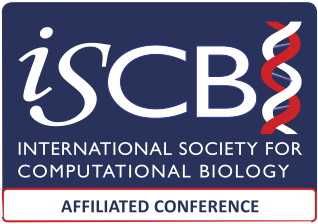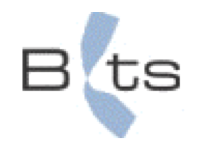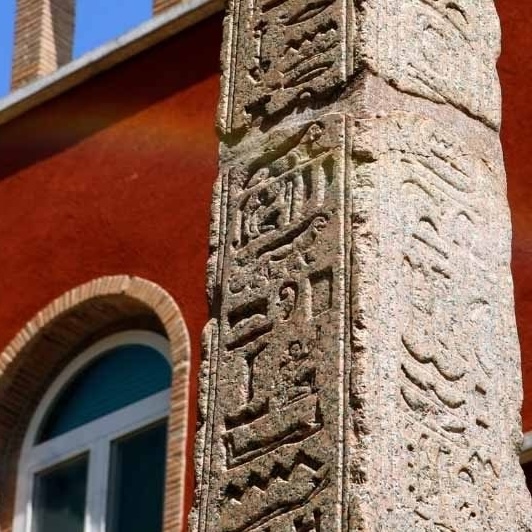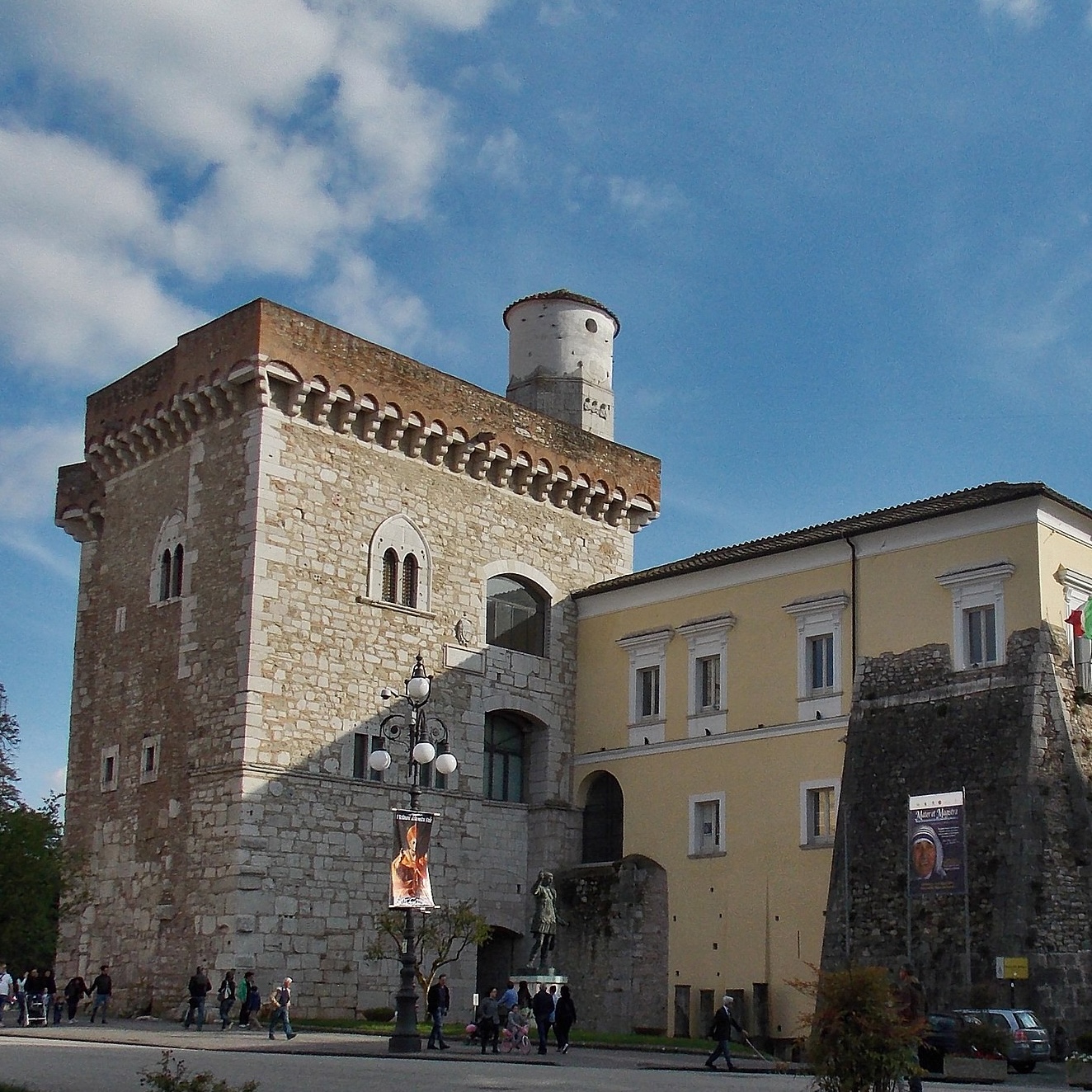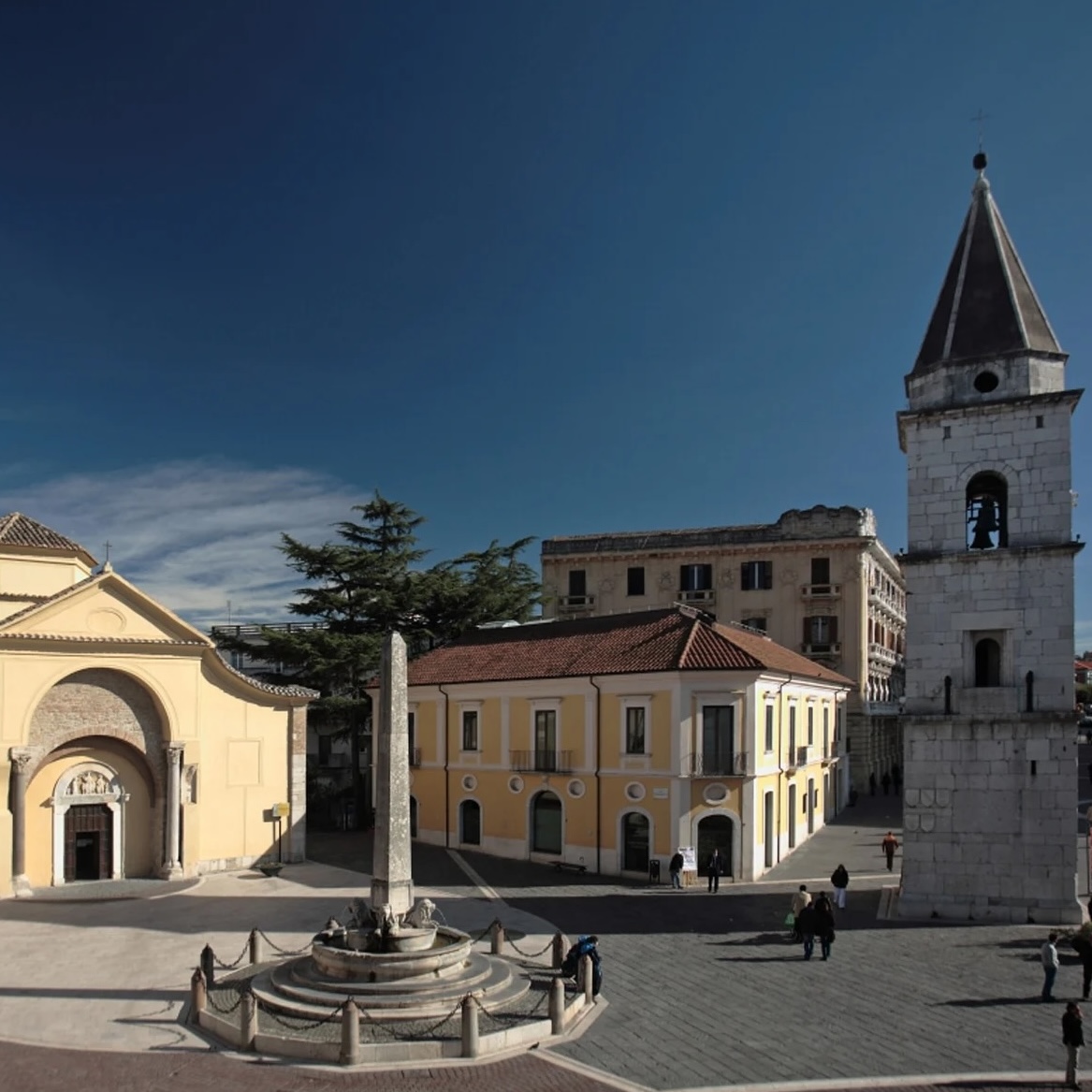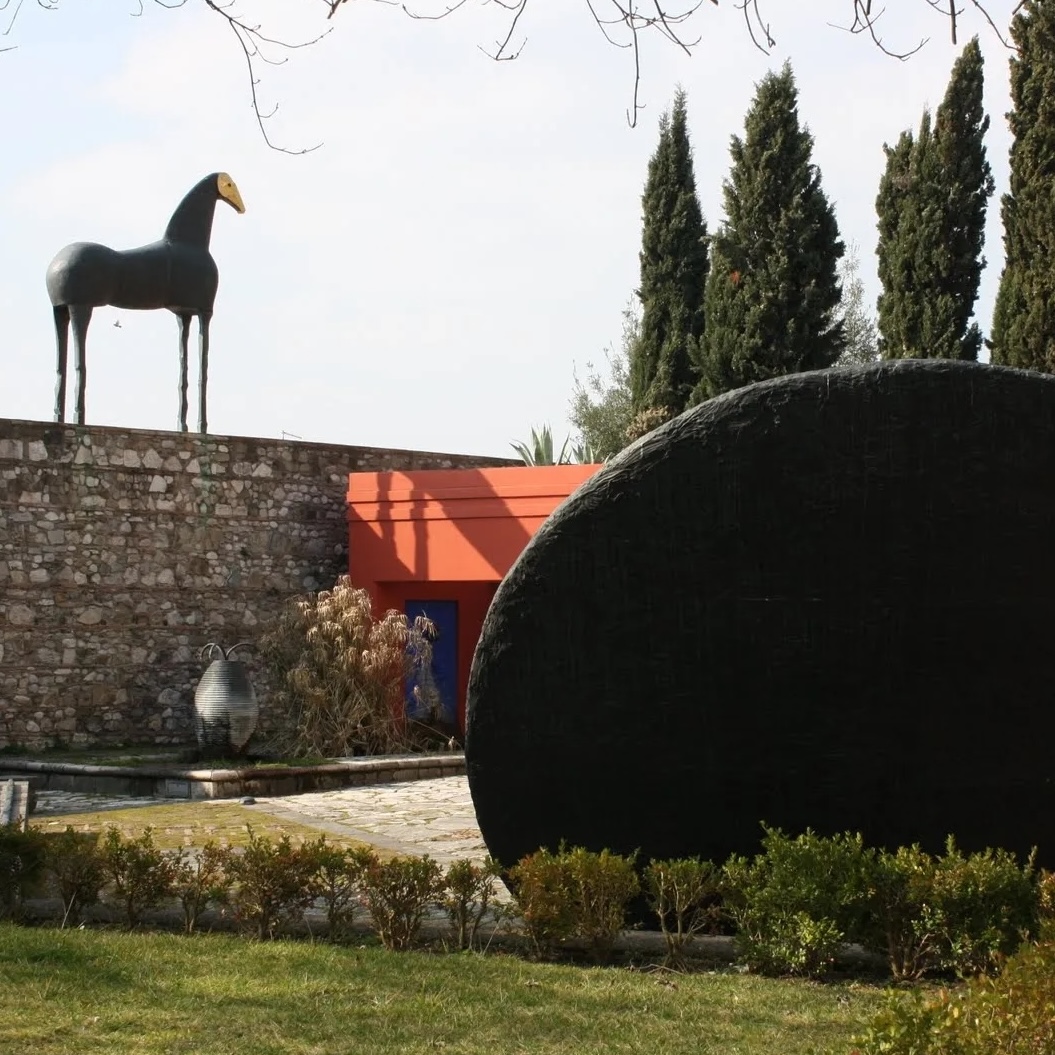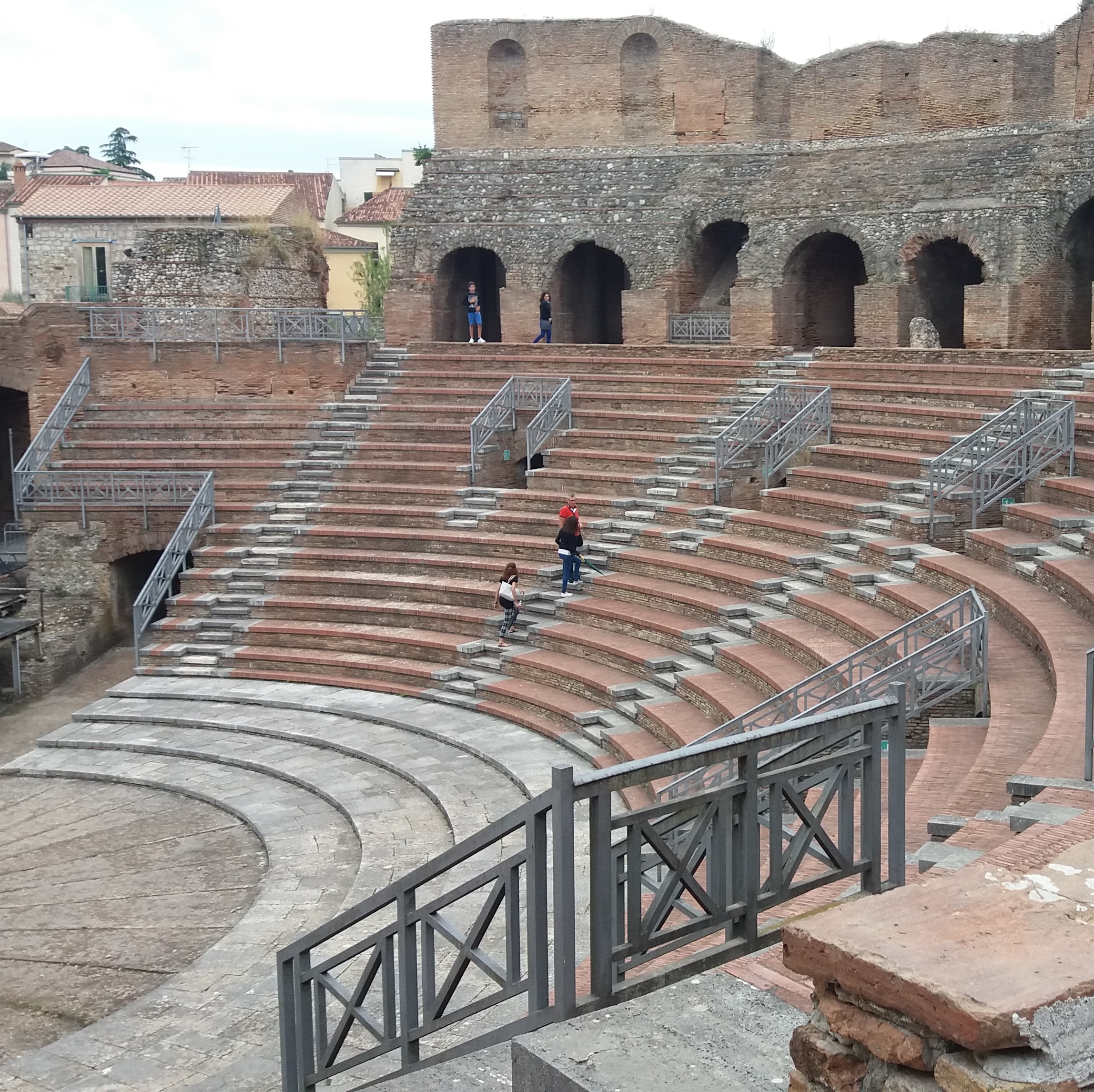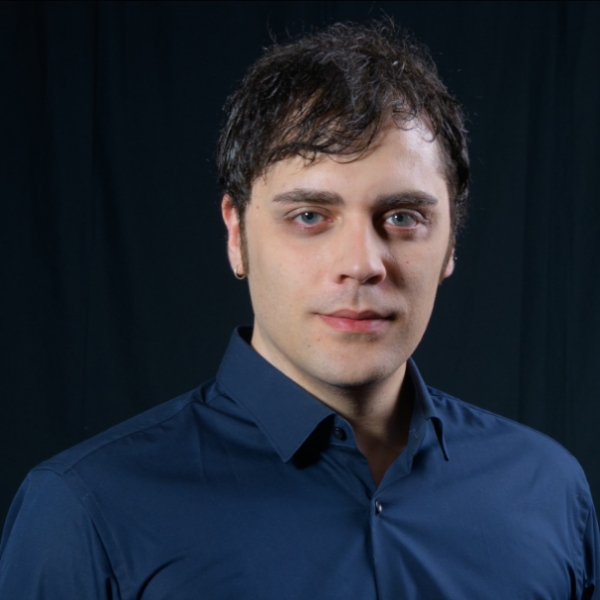About
The inception of the International Conference on Computational Intelligence Methods for Bioinformatics and Biostatistics (CIBB) dates back to 2004 when it was co-founded by Roberto Tagliaferri (Università di Salerno, Italy), Francesco Masulli (Università di Genova, Italy), and Antonina Starita (Università di Pisa, Italy). Originally conceived as a special session during the 14th Italian Workshop on Neural Networks (WIRN 2004) in Perugia, Italy, the conference quickly gained international recognition. For its initial four editions, CIBB operated as a special session within various international conferences hosted in Italy. In October 2008, CIBB transitioned into an independent conference, marking its autonomy with the first standalone edition held in Vietri sul Mare, Italy. Tragically, this edition occurred shortly after the passing of Antonina Starita (1939-2008), one of the conference's founders.
CIBB provides a multidisciplinary forum for researchers interested in the application of Computational Intelligence, in a broad sense, to open problems in bioinformatics, biostatistics, and medical informatics. Since its inception in 2004, the conference has produced 12 proceedings books, 4 sections of proceedings books, and 9 journal supplements, encompassing approximately 400 peer-reviewed original scientific publications (past editions). Traditionally CIBB occured almost every 2 years and CIBB 2023 in Padova marked a return to in-person gatherings following the virtual format adopted in 2021. From this year CIBB conferences will be on annual basis and CIBB 2024 will be the first of this series.
CIBB is looking for contributions on current trends and future opportunities at the interface between computer and life sciences, and applications of computational intelligence to system and synthetic biology. Theoretical and experimental biologists are also encouraged to participate and present their experience in facing novel challenges to foster multidisciplinary collaboration.
Authors are invited to submit a short paper (4-6 pages) describing their original contribution in the fields of bioinformatics, biostatistics, systems and synthetic biology, and medical informatics. All accepted contributions will be presented in plenary oral sessions or special sessions.
After the conference, the authors of all the accepted short papers will be invited to submit an extended version of their manuscripts to the conference proceedings book in Springer Lecture Notes in Bioinformatics (LNBI), or to a supplement in a journal such as BMC Bioinformatics or Journal of Translational Medicine.
Printable flyers
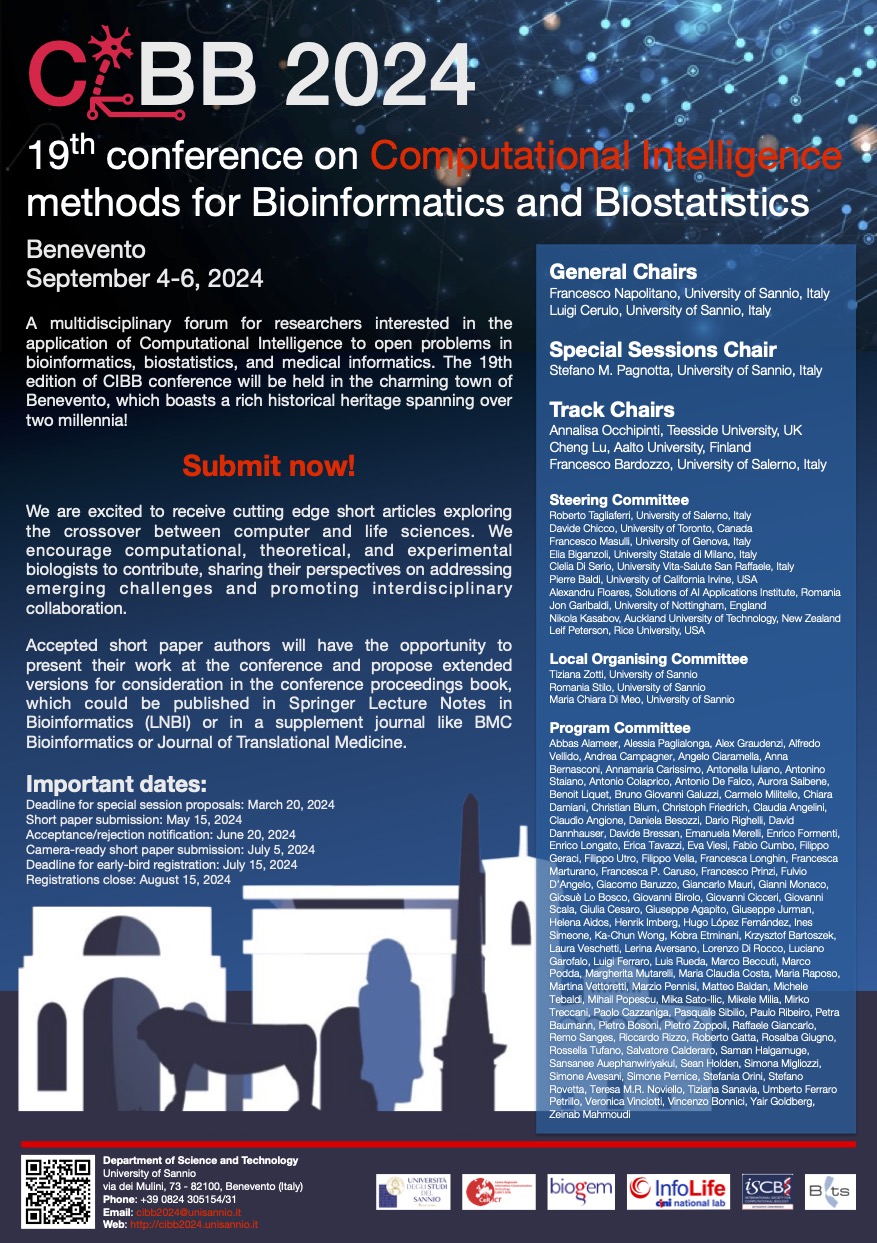
Where
In the S. Agostino Auditoriom of University of Sannio in the city of Benevento, Italy
When
Wednesday to Friday, September 4-6, 2024
Contact Us
Department of Science and Technology
University of Sannio
via dei Mulini, 73 - 82100, Benevento (Italy)
Phone: +39 0824 305154
Email: cibb2024@unisannio.it
Short paper submission
Submit now at https://easychair.org/conferences/?conf=cibb2024
(Please choose the Special Session that best aligns with your contribution, or select one of the main tracks if none are suitable)
Authors are encouraged to submit a short paper (4-6 pages) outlining their original contributions within one of the main conference tracks (Bioinformatics, Biostatistics, and Medical Informatics) or one of the eleven special session tracks (topics and chairs detailed below). During the review process, papers may be reassigned to different tracks if deemed more suitable by the reviewers and chairs. Each paper will undergo the same rigorous peer review process, with a minimum of two reviewers. In cases of uncertainty or differing opinions, a third reviewer will provide additional evaluation.
Reviewers are tasked with assessing the submission's quality for potential oral presentation, suggesting minimal adjustments for the conference presentation, and identifying areas for potential expansion for extended submissions, due after the conference (Tentative date, October 2024). The aim is to facilitate authors in promptly initiating work on expanding their papers for consideration in LNCS or Journal supplement publications.
In October 2024, the program committee will reconvene to evaluate the significant revisions made to submitted papers. Together with the chairs, they will select papers to be invited for journal supplements, while the remaining papers will be published in the LNCI proceedings of the conference.
Paper awards
This year, we're organizing a best paper award. Details will follow, stay tuned! All accepted papers will be eligible for consideration. Authors of the winning paper will be awarded during the social dinner (or welcome reception) and the paper will be automatically selected for the submission to a journal supplement.
Key dates
| May 22nd |
Short paper submission deadlineAuthors are required to submit their papers. |
|||
| June 20th |
Notification of AcceptanceAuthors are notified about the acceptance of their papers. |
|||
| July 5th |
Camera Ready SubmissionAuthors are required to submit the version for oral presentation of their papers with minimal adjustments. |
Prepare extended versionAuthors are invited to extend their paper incorporating at least revision comments received on June 20th. |
||
| September 4th - 6th |
ConferenceAuthors present their work at the conference. |
|||
| October 1st, 2024 |
Extended version submission deadlineAuthors are invited to submit the extended version of their paper for selection to supplemental journal submission. |
|||
| November 1st, 2024 |
Papers selected for submission to a journal supplement is announcedAuthors are notified whether their paper has been selected for journal supplement submission or for LNCS conference proceeding publication. |
|||
| December, 2024 |
Submission to a supplemental journalAuthors of selected papers are invited to submit their work to journal supplements. Selected papers undergo a second review process and are subject to acceptance for publication. |
|||
Short paper templates
Main Research Tracks
-
Bioinformatics
Expand - Applications of machine learning to bioinformatics or health datasets
- Data mining methods in biomedical contexts
- Artificial intelligence in biomedicine
- Next-generation sequencing bioalgorithms
- Multi-omics data analysis
- Statistical analysis of high-dimensional omics data
- Algorithms for alternative splicing analysis
- Methods for visualization of high-dimensional biomedical data
- Software tools for bioinformatics
- Methods for comparative genomics
- Computational tools for proteomics
- Simulation of biological systems and clinical populations
- Methods for the functional classification of genes
- Algorithms for molecular evolution and phylogenetic analysis
- Methods for unsupervised analysis, validation, and visualization of structures discovered in bio-molecular data
- Health informatics and medical informatics
- Biomedical and microscopy imaging
- Methods for the integration of clinical, genetic, or environmental data
- Heterogeneous data integration and data fusion
- Algorithms for pharmacogenomics
- Biomedical text mining and natural language processing
- Bayesian methods for medical and biological data
- Health big data analytics
- Data-driven approaches for patient stratification, and prognosis or onset prediction
- Process mining in healthcare
- Information retrieval, and temporal and spatial representation and reasoning in biomedicine
- Simulation models, software, and tools (clinical decision support systems, patient engagement support, visual analytics, solutions for assisted living, and telemedicine)
- Biomedical signal processing
- Explainable AI and clinical model interpretation
- Personalised medicine for diagnosis and prognosis
- Statistical methods for the analysis of clinical data
- Prediction of secondary and tertiary protein structures
- Advanced pathway enrichment analysis methods
- Mass spectrometry data analysis in proteomics
- Bio-molecular databases and data mining
- Mathematical modelling and automated reasoning on biological and synthetic systems
- Computational simulation of biological systems
- Methods and advances in systems biology
- Spatio-temporal analysis of synthetic and biological systems
- Network systems biology
- Models for cell populations and tissues
- Methods for the engineering of synthetic components
- Modelling and engineering of interacting synthetic and biological systems
- Software tools for bioinformatics, biostatistics, systems and synthetic biology
- Computational drug discovery
- Operational research in healthcare and bioinformatics
- Annalisa Occhipinti, Teesside University, UK
-
Biostatistics
Expand - Statistical analysis of high-dimensional omics data
- Methods for comparative genomics
- Health informatics and medical informatics
- Bayesian methods for medical and biological data
- Health big data analytics
- Data-driven approaches for patient stratification, and prognosis or onset prediction
- Statistical methods for the analysis of clinical data
- Advanced pathway enrichment analysis methods
- Cheng Lu, Aalto University, Finland
-
Medical Informatics
Expand - Artificial intelligence in biomedicine
- Health informatics and medical informatics
- Biomedical and microscopy imaging
- Methods for the integration of clinical, genetic, or environmental data
- Heterogeneous data integration and data fusion
- Biomedical text mining and natural language processing
- Health big data analytics
- Information retrieval, and temporal and spatial representation and reasoning in biomedicine
- Simulation models, software, and tools (clinical decision support systems, patient engagement support, visual analytics, solutions for assisted living, and telemedicine)
- Explainable AI and clinical model interpretation
- Personalised medicine for diagnosis and prognosis
- Process mining in healthcare
- Computational drug discovery
- Operational research in healthcare and bioinformatics
- Francesco Bardozzo, University of Salerno, Italy
Topics of interest include, but are not limited to:
Chair
Topics of interest include, but are not limited to:
Chair
Topics of interest include, but are not limited to:
Chair
Special session tracks
-
Computational Intelligence in Personalized Medicine
Expand - Applications of personalized medicine based on CI methods
- Biomedical pattern recognition using machine learning for PM
- Data-intensive biomedical assays
- Biomedical data sharing and harmonization
- Regulation of CI-based medical devices Interpretable, explainable and transparent CI methods for PM
- Caroline König, Universitat Politècnica de Catalunya, UPC Barcelona Tech, Spain
- Alfredo Vellido, Universitat Politècnica de Catalunya, UPC Barcelona Tech, Spain
-
Natural language processing (NLP) and large language models (LLM) for unstructured data in health informatics
Expand - ML/DL based Natural Language Processing applied to Clinical assessment, exams, and health processes
- Natural Language Inference in Diagnostics
- Natural Language inference in Clinical assessment
- Knowledge Extraction and Information Analysis
- Natural Language Generation
- Large Language Models applied to Healthcare fields
- Lerina Aversano, University of Foggia, Department of Agricultural Science, Food, Natural Resources and Engineering, Italy
- Antonella Madau, University of Sannio, Engineering Departments, Italy
- Debora Montano, Regional Center Information Communication Technology (CeRICT), Italy
- Chiara Verdone, University of Sannio, Engineering Departments, Italy
-
Informatics research in bioinformatics: contributions from the CINI-InfoLife network
Expand - Computational transcriptomics and spatial transcriptomic data analysis
- Singe-cell omics
- Multi-omics data analysis and models
- Computational pangenomics
- High-performance computing for omics data
- Algorithms and data structures for bioinformatics
- Knowledge management in bioinformatics and medical informatics
- Drug development and pharmacovigilance
- Artificial intelligence and machine learning in bioinformatics
- Advanced technique for bio-medical content visualization
- Bio-inspired computing for bioinformatics
- Computational modeling and omics data
- Vincenzo Bonnici, Department of Mathematical, Physical, and Computer Sciences, University of Parma, Italy
- Simone Pernice, Computer Science Department, University of Turin, Italy
- Giacomo Baruzzo, Department of Information Engineering, University of Padova, Italy
- Bruno Galuzzi, Institute of Bioimaging and Molecular Physiology (CNR-IBFM), Italy
- Mikele Milia, University of Padova, Italy
- Leonardo Pellegrina, Department of Information Engineering, University of Padova, Italy
- Roberto Pagliarini, Department of Mathematics, Computer Science and Physics, University of Udine, Italy
-
Machine learning for structured data in clinical informatics and medical biology
Expand - Machine learning methods applied to health care and biomedical datasets
- Machine learning methods applied to genetics and epigenomics datasets, to understand the conditions of healthy and/or sick patients
- Machine learning methods applied to biological datasets to understand the underlying biomolecular scenario
- Machine learning software and tools in the health care and biological domains
- Statistical models to analyze health care, biomedical, and biological datasets
- Data mining applications in the health care and biological domains
- Davide Chicco, Università di Milano-Bicocca, Italy
- Giuseppe Jurman, Fondazione Bruno Kessler, Italy
- Giuseppe Agapito, Università Magna Graecia di Catanzaro, Italy
- Wei Liu, Fujian Agriculture and Forestry University, China
- Matthijs Warrens, Rijksuniversiteit Groningen, the Netherlands
-
Advancements in Biological Network Analysis
Expand - Single-cell transcriptomics network modelling.
- Networks in spatial transcriptomics.
- Computational methods for constructing and analyzing biological networks.
- Multiomics data integration via network.
- Network-based approaches for studying gene regulation, protein-protein interactions, and signaling pathways.
- Applications of network analysis in disease research and drug discovery.
- Annamaria Carissimo IAC/CNR Naples, Italy
- Dario Righelli Department of Electric Engineer and Technology Information, University of Naples Federico II, Naples, Italy
- Valeria Policastro University of Naples Federico II, Naples, Italy
-
Uncertainty in deep learning applications
Expand - Prediction uncertainty in Health informatics
- Methods for the visualisation of out-of-distribution samples
- Out-of-distribution recognition
- Metrics for model evaluation and sample prediction
- Unknown sample prediction techniques
- Mathematical modelling of out-of-distribution recognition
- Open-set versus closed-set recognition
- Application of out-of-distribution recognition
- Explainable AI
- Methods for active learning
- David Dannhauser, University of Naples (Federico II), Italy
- Pasquale Memmolo, Istituto di Scienze Applicate e Sistemi Intelligenti 'Eduardo Caianiello', Italy
-
Statistical modelling and machine learning to support cancer research
Expand - Antonella Iuliano, Department of Mathematics, Computer Science and Economics (DIMIE), University of Basilicata, Italy
- Monica Franzese, Istituto di Ricovero e Cura a Carattere Scientifico nell'area di ricerca della Diagnostica (IRCCS SYNLAB SDN), Naples, Italy
-
Modeling and simulation methods for computational biology and systems medicine
Expand - Parameterization and verification of biomedical models
- Modeling neural activity
- Individual-aware models to assess the impact of genetic variation on cellular regulatory network
- Cancer progression models
- Epidemiological models
- Multiscale models and simulation of biological systems
- Space-temporal models and simulation of biological systems
- Robustness of cellular networks
- Emergent properties in complex biological systems
- Metabolic and signaling pathways analysis and engineering
- Genetic variants impact on epigenetic elements
- Models for personalized and targeted therapies
- Patient classification and stratification
- Drug combination, repositioning and recommendation for personalized medicine
- Clinical data integration into systems biology models
- Single-cell and spatial transcriptomics analysis
- Simone Avesani, University of Verona, Italy
- Marco Beccuti, University of Turin, Italy
- Vincenzo Bonnici, University of Parma, Italy
- Chiara Damiani, University of Milano-Bicocca, Italy
- Bruno Giovanni Galuzzi, CNR, Italy
- Rosalba Giugno, University of Verona, Italy
- Gospel Ozioma Nnadi, University of Verona, Italy
- Simone Pernice, University of Turin, Italy
- Michele Tebaldi, University of Verona, Italy
- Manuel Tognon, University of Verona, Italy
- Eva Viesi, University of Verona, Italy
-
Translational medical informatics and data privacy protection
Expand - Application of Large Language Models in Translational Medical Informatics
- Data Privacy Protection in the Era of Large Language Models and Artificial Intelligence
- The Role of Artificial Intelligence in Disease Prediction and Prevention
- Improving Patient Experience and Treatment Outcomes with Big Data and Artificial Intelligence
- Interdisciplinary Integration and Innovative Applications of Large Language Models
- Genomic Medicine Informatics and Artificial Intelligence
- Large Models in Digital Medicine and Health Management
- Modern Hospital Management and Artificial Intelligence
- Translational Medical Informatics in Health Education and Talent Cultivation
- Digital Twin, Brain-Computer Interface, Metaverse, and Future Medicine
- Bairong Shen, Sichuan University, China
- Silvana Quaglini, University of Pavia, Italy
- Mauro Giacomini, University of Genoa, Italy
- Gabriella Balestra, Politecnico di Torino, Italy
- Shuaicheng Li, City University of Hong Kong, Hong Kong
-
Graph Neural Networks for Biological Data
Expand - Domenico Amato, University of Palermo, Department of Mathematics and Computer Science, Italy
- Salvatore Calderaro, University of Palermo, Department of Mathematics and Computer Science, Italy
- Filippo Vella, National Research Council of Italy, Institute for High Performance Computing and Networking, Italy
-
Computational Structural Bioinformatics
Expand - Structure representation, prediction, and comparison
- Pattern recognition, clustering and classification
- Interaction and docking
- Sequence-structure functional relationships
- Molecular dynamic simulations
- Biomolecular graphics
- Coarse-grained modeling and simulations
- Data mining and machine learning of structural data
- Structure-based drug design
- Data mining and process mining applications in structural bioinformatics
- Artificial intelligence and machine learning in structural bioinformatics
- Michela Quadrini, University of Camerino, Italy
- Luca Tesei, University of Camerino, Italy
- Alexander Miguel Monzon, University of Padua, Italy
Increased life expectancies and the expectation of universal medical care provision in modern societies clash with the increasing costs of meeting those challenges. The promises of Personalized Medicine (PM) may become wishful thinking unless they deliver on cost efficiency. The most promising avenue to deliver on such efficiency is the use of data science approaches. The use of data-centred Computational Intelligence (CI) methods is becoming an important tool in healthcare and medical applications for providing enhanced diagnosis and prognosis tailored to the patient's characteristics and needs. Data-intensive assays, widespread sensorization and big data technologies enable the capturing and sharing of increasingly larger amounts of biomedical data, which need to be exploited through computational analysis in order to discover meaningful patterns in data. CI methods, including machine learning in general (and deep learning in particular) as well as other soft computing approaches are at the forefront of efficient complex medical and omics data analysis. In this special session, we call for new research on applications that, using CI approaches, can provide efficient solutions for the development of PM applications based on biomedical and bioinformatics data.
Topics of interest include, but are not limited to:
Chairs
Natural Language Processing (NLP) combines linguistics and computer science and empowers building Artificial Intelligence (AI) solutions able to comprehend, interpret, and generate human language. In recent years, it has had various applications also in medical applications. NLP impacts many clinical key areas such as clinical documentation and EHR analysis where it assists in automating the extraction of relevant information from clinical notes useful for diagnosis, drawing information on treatments and prescriptions, identifying adverse events, and summarising patient histories. NLP can also be combined with medical imaging technologies (with the use of Large Language Models for example) to extract information from radiology reports, pathology reports, and other imaging-related documents facilitating image interpretation, automating report generation, and improving communication between radiologists, pathologists, and other healthcare professionals. Furthermore, NLP also finds a place in health monitoring and surveillance where it can analyze text data from sources such as social media, online forums, and electronic health records to monitor public health trends, detect disease outbreaks, and track the spread of infectious diseases helping public health agencies and so that healthcare providers respond more effectively to emerging health threats. This session mainly focuses on exploring NLP and LLM models in the context of healthcare. The ability to extract information to interpret and analyse the history of the patients is critical to increasing the prediction on time of the diagnosis and recommendations to provide to medical staff, for this reason, NLP techniques can be created with this specific goal: to provide more information to be analysed by AI solutions. The goal is for artificial intelligence models to become a useful and reliable tool that helps in decisions and treatment of pathologies. Finally, the purpose of this special session is to bring together global professionals, industry leaders, and specialists involved in evaluating, creating, and using explainability methodologies in healthcare.
Topics of interest include, but are not limited to:
Chairs
The national CINI (Consorzio Interuniversitario Nazionale di Informatica) InfoLife laboratory promotes networking initiatives among researchers with an informatics background who conduct relevant research in bioinformatics, and related topics, together with their international partners. Italy is an important source, and partner, in providing computational approaches for any aspect of the bioinformatic field, from the development of baseline specialized algorithms and data structures to the implementation of high-level data analysis and visualization. This special session, building on the success of last year's event at CIBB2023, aims to once again provide an insightful overview of current research and future perspectives in bioinformatics conducted by Italian research institutes of Informatics and their partners. In addition, we are pleased to announce that this year's session will also feature contributions from the National Biodiversity Future Center (NBFC).
Topics of interest include, but are not limited to:
Chairs
Machine learning has become a pivotal tool to analyze biomedical and biological datasets, especially in the Big Data era. In fact, machine learning algorithms can identify hidden relationships and structures in health care data, and even take advantage of them to formulate accurate predictions about similar or future data instances. For example, machine learning software has been able to predict the diagnosis of oncological patients just by processing patients' clinical features, allowing scientists to save time and money compared to wet lab experiments. Computational researchers have also exploited machine learning to infer knowledge about patients by analyzing biological datasets, especially the ones featuring genetics and epigenomic traits. Data mining approaches applied to such datasets, in fact, can lead to relevant discoveries both to understand molecular biology and to gain new knowledge about patients' diseases. Our special session aims at boosting these scientific fields, calling for researchers able to show the potential and the advances of machine learning algorithms, in making accurate computational predictions in health care datasets and in patient-oriented biological datasets.
Topics of interest include, but are not limited to:
Chairs
In biology, networks have become powerful models for understanding the intricate relationships between various molecular entities. With the proliferation of high-throughput biological data together with the latest advancements in spatial biology, the analysis of molecular networks has emerged as a central focus for bioinformatics research, allowing to facilitate the modelling of always more complex experiments. Networks offer a versatile framework for representing patterns of interaction across diverse biological systems, ranging from gene regulation to cellular signaling or cellular spatial organization. Co-expression, co-methylation, protein-protein interaction, and cell-cell interaction networks, among others, have become essential tools for deciphering the complexities of biological processes.
Topics of interest include, but are not limited to:
Chairs
To prevent wrong predictions of a Neural Network, we need to better understand and/or visualize the confidence of each individual prediction. For this reason, we ask the community, what happen if a model must predict an out-of-distribution sample in an open-world scenario? In other words, how a model defines a certain in-distribution (test data is assumed to be drawn from the training data), to detect an out-of-distribution event. In fact, a model can cause prediction failures due to its blindness and poor awareness. Moreover, it conveys high confident in its correctness, which can be problematic for wide range of applications, such as for healthcare applications. For instance, standard metrics for the evaluation of Deep Learning models measure overall model performance on a limit test dataset and provide no indication of the model confidence in the correctness of an individual prediction of new samples. That can result in prediction failure, when a model is faced with out-of-distribution data. Therefore, we should question our self. How can we detect and visualize unknown unknowns? The scope of this special session is to ask the research community how they measure out-of-distribution samples and how we can better predict out-of-distribution samples in the future.
Topics of interest include, but are not limited to:
Chairs
Statistical modelling (SM) and Machine learning (ML) are nowadays the main tools to improve the understanding the pathophysiological mechanisms underlying diseases, in particular in the area of cancer research. The aim of this session is to combine ML and statistical models to offers several capabilities in handling high-dimensional data and to provide clarity, simplicity and reliability in complex problems. Therefore, the approaches behind SM and ML is mandatory to comprehend the fundamental principles upon which it is possible to set up more complicated real-life systems. Moreover, the purpose of this session is to create a discussion for researchers in order to present new concepts for finding solutions to challenges in cancer research for prevention, early detection, prognosis and to support clinical decision making.
Chairs
Computational biology is a field that involves the analysis of biological systems at various levels of complexity, using appropriate modeling frameworks and computational methods. With the advancement of computational biology approaches and modeling systems, the current challenge is to employ these techniques to define personalized models that identify tailored drugs and therapies, thus realizing the personalized medicine paradigm. The aim of this special session is to bring together researchers who are working on the development of methods and models applied in the fields of computational biology and systems medicine to facilitate the exchange of knowledge and ideas in these innovative and fundamental research areas. The workshop will be sponsored by InfoLife CINI National Laboratory (https://www.consorzio-cini.it/index.php/en/) and by the National Biodiversity Future Center (NBFC) (https://www.nbfc.it/).
Topics of interest include, but are not limited to:
Chairs
With the development of large language models and their increasing application in the healthcare sector, the issues of translational medical informatics and data privacy protection have become particularly important. Large language models have shown great potential in processing and analyzing large-scale biomedical datasets to assist clinical decision-making and research. However, this also comes with the risk of sensitive health information leakage. Translational medical informatics is dedicated to transforming biomedical discoveries into practical clinical applications, involving a wide range of information types from genomic data to electronic health records. Therefore, implementing effective data privacy protection measures is key to ensuring personal information security, maintaining patient trust, and promoting scientific progress. In designing and applying large language models and other data analysis tools, data privacy must be considered from the outset, adopting a comprehensive strategy to protect personal privacy without hindering medical knowledge advancement. This includes, but is not limited to, the use of encryption technologies, anonymizing data, and implementing strict data access controls. Additionally, transparency and explainability are equally important in this process; researchers, clinicians, and ultimately the patients should be able to understand how data are processed and used in the decision-making process. To balance the needs of privacy protection with medical research and clinical applications, new technological and policy frameworks need to be developed.
Topics of interest include, but are not limited to:
Chairs
With their ability to capture structures and relationships in various domains, graphs are a powerful tool for real-world data analysis. Graph Neural Networks have been conceived to integrate graphs with the computational capability of neural architecture, and they have proven to be versatile models suitable for various computational problems. These include, but are not limited to, node classification, link prediction, and graph prediction. The adaptability of GNNs is particularly noteworthy, as they can handle information that does not adhere to traditional grid-like structures. This adaptability is a critical feature that sets GNNs apart and makes them powerful tools for supervised and unsupervised classification problems. Recently, by leveraging the power of deep learning, these models have become increasingly famous for their capability to represent and analyse biological data. With their ability to model complex interactions, they are well-suited, for instance, in the fields of protein structure prediction, drug discovery, gene expression analysis, sequence classification, and medical image processing. The main objective of this special session is to provide a forum for the presentation and discussion of original papers and the latest methods, including GNN, in the context of biological data processing.
Chairs
Structural Bioinformatics plays a crucial role in many fields such as macromolecule structure and function prediction, identification of potential drug targets, understanding protein-protein/DNA/RNA interactions, predicting the effect of mutations on macromolecule function, and studying the relationship between dynamics and function. The scope of this special session is to bring together researchers from various disciplinary backgrounds involved in structural bioinformatics of Proteins, RNAs and Complexes to facilitate the integration of different research areas. We welcome the presentation of preliminary ideas or results of ongoing active studies.
Topics of interest include, but are not limited to:
Chairs
Ready to submit?
Submit now at https://easychair.org/conferences/?conf=cibb2024
(Please choose the Special Session that best aligns with your contribution, or select one of the main tracks if none are suitable)
Keynote Speakers

Michele Ceccarelli
Professor of Computational Oncology
University of Miami, FL, USA
Ruth Heller
Professor of statistics
Tel-Aviv University, Israel

Marieke Kuijjer
Group Leader, Center for Molecular Medicine
University of Oslo, Norway
Event Schedule
Here is our event schedule
TBD
Auditorium S. Agostino
Via De Nicastro, 13, 82100 Benevento
Augustinian convent dating back to the XIII century
The auditorium is located inside the unconsecrated church, which can host up to 300 attendees without architectural barriers. The adjacent cloister will be arranged and decorated to accommodate tables, seats, and buffets for coffee and lunch breaks.
Today it serves as the lecture hall for courses in the Department of Engineering at the University of Sannio. The residence and its ancient remains are open for all those who want to immerse themselves in an eighteenth-century atmosphere.
University of Sannio and the city of Benevento
University of Sannio is an urban university, nestled in the beautiful city of Benevento, with its campuses spread across various areas of the city.
Benevento, the capital of the homonymous province, is located in the Apennine hinterland of Campania, in the southern part of Sannio. The city, situated in a valley, is crossed by the rivers Calore and Sabato; from it, you can see, to the west, the peaks of the Taburno-Camposauro massif, the Dormiente del Sannio; to the east, the slopes of the Dauni mountains; to the northwest, Mount Mutria and Matese, and to the south, Partenio. The city was first called Maleventum, then Beneventum, and finally Benevento. Benevento was initially a Samnite city, then Roman, later Lombard, and finally papal, boasting a significant historical-artistic heritage and a remarkable archaeological heritage. According to legend, the city was founded by the Greek hero Diomedes after the destruction and burning of Troy. In reality, the foundation seems to have been carried out by the Oscans, and the city later passed to the Samnites. Ceramics and bronzes from the 8th and 7th centuries BC are evidence of the city's pre-Roman period. After a long resistance, the Samnites finally surrendered to the Romans in 268 BC, who renamed it Beneventum. Some important Roman monuments, such as the Arch of Trajan and the Leproso Bridge, still enrich and beautify the city today.
During the Middle Ages, Benevento was first conquered by the Goths, then by the Byzantines, and in 571, by the Lombards, whose rule lasted until 1077 when the city came under papal dominion. During the 18th century, it was first owned by Ferdinand IV of Bourbon and later became part of the Parthenopean Republic. In 1806, it was under the rule of Napoleon, and in 1860, it was annexed to the Kingdom of Italy.
University of Sannio Social links:
How to reach Benevento
The most convenient method for traveling to Benevento is by train, using services like Trenitalia or Italo, from either Rome or Bari, including their airports. Although traveling from Naples Airport might be quicker, it's usually less convenient compared to the fast train routes from Rome or Bari.
Conference venues are within walking distance from the recommended lodging options, all of which are located throughout Benevento's historical center.
Should you need any help with travel or accommodation arrangements, please feel free to reach out to us.
Suggested routes from key locations:
- Milan Stazione Centrale, 5h 30min by train (Freccia rossa + Freccia rossa/argento)
- Rome Fiumicino Airport, 2h 42min by train (Leonardo express + Freccia rossa)
- Bari Karol Wojtyla Airport, 2h 55min by train (Regionale + Freccia rossa)
- Napoli Capodichino Airport, 2h 39min by AIRBUS + train (Airbus + Regionale) or 2h 5min by Aircampania BUS (www.aircampania.it)
Hotels
You can arrange your hotel stay for the conference by:
- Booking on your own.
- Booking through our affiliated travel agency before July 30th. This ensures you get a room reserved just for conference attendees in selected hotels. We provide below two possible choices based on hotel star rating. The link to the booking system of our affiliated travel agency will be made available soon.
We're here to make your stay as smooth as possible. If you need any assistance, feel free to reach out to us!

Three star hotels
Walking distance from the Venue

Four star hotels
Walking distance from the Venue
Registration of participants
Registration will be activated soon! The Early-bird registration deadline is July 15th.
We're offering the same fees as the last CIBB edition. Please be aware that travel and accommodation expenses are not included. Additionally, each accepted short paper must be linked to at least one full registration.
ISCB members have 15% discount on registration fee (subject to check by the ISCB society).
Students and retired academics must provide valid documentation as proof of their status.
Full
€ 450
ISCB members € 382
- Conference kit
- Coffee Break
- Lunch Break
- Welcome reception
- Guided tour
- Social dinner
Student/retired accademic
€ 370
ISCB members € 314
- Conference kit
- Coffee Break
- Lunch Break
- Welcome reception
- Guided tour
- Social dinner
Student/retired accademic
€ 300
ISCB members € 255
- Conference kit
- Coffee Break
- Lunch Break
- Welcome reception
- Guided tour
- Social dinner
Sponsors and Affiliations
In the years CIBB conferences were attended from people mainly coming from Italy and Europe, including professors, researchers, young graduates, PhD students, early-career researchers, and technicians in academic medical centres and research institutes. The main purpose is to meet people with multidisciplinary interests in computation, artificial intelligence, bioinformatics, biostatistics, systems and synthetic biology, medical informatics, and their applications in accademy and industry.
Want to be a CIBB 2024 Sponsor?
As a sponsor you could have the opportunity to:- INCREASE YOUR VISIBILITY to an international scientific and academic audience.
- SHOWCASE YOUR PRODUCTS to a wide range of professionals (methodologists, experimenters, field researchers).
- MEET THE FUTURE of biostatistics, bioinformatics, and medical informatics by getting in touch with brilliant national and international students.
- CREATE NEW OPPORTUNITIES for partnerships with academia, startups, and entrepreneurs.
We have sponsorship Silver (500 Euro) and Gold (1500 Euro) sponsorship opportunities. Please contact us for further details
Sponsors
Affiliations
CIBB Newsletter
If you want to be updated on key dates and whatever is related to the 2024 CIBB and future CIBB events,
please leave your data below to subscribe to CIBB newsletter.
Organization
General Chairs
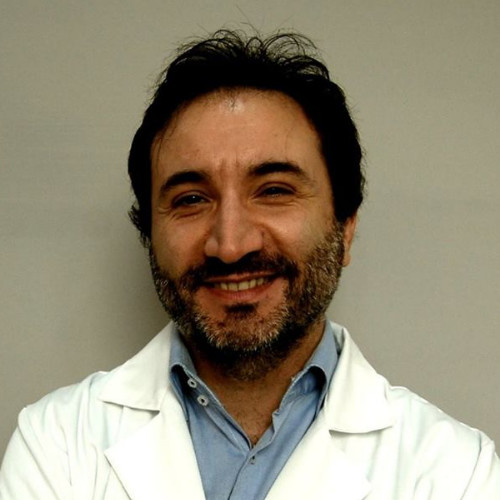
Francesco Napolitano
Assistant Professor, University of Sannio, Italy
Special Sessions Chair

Stefano Maria Pagnotta
Associate Professor, University of Sannio, Italy
Track Chairs
Biostatistics

Cheng Lu
Academy Research Fellow, Aalto University, Finland
Research Director, University of Eastern Finland
Steering committee
- Roberto Tagliaferri, University of Salerno, Italy
- Davide Chicco, University of Toronto, Canada
- Francesco Masulli, University of Genova, Italy
- Elia Biganzoli, University Statale di Milano, Italy
- Clelia Di Serio, University Vita-Salute San Raffaele, Italy
- Pierre Baldi, University of California Irvine, USA
- Alexandru Floares, Solutions of Artificial Intelligence Applications Institute, Romania
- Jon Garibaldi, University of Nottingham, England
- Nikola Kasabov, Auckland University of Technology, New Zealand
- Leif Peterson, Rice University, USA
Program committe
- Abbas Alameer, Kuwait University, Kuwait
- Alessia Paglialonga, IEIIT National Research Council (CNR), Italy
- Alex Graudenzi, University of Milano-Bicocca, Italy
- Alfredo Vellido, University of Catalunya, Spain
- Andrea Campagner, University of Milano-Bicocca, Italy
- Angelo Ciaramella, University of Napoli Parthenope, Italy
- Anna Bernasconi, Politecnico di Milano, Italy
- Annamaria Carissimo, IAC National Research Council (CNR), Italy
- Antonella Iuliano, University of Basilicata, Italy
- Antonino Staiano, Università of Napoli Parthenope, Italy
- Antonio Colaprico, University of Miami, Florida (USA)
- Antonio De Falco, University of Napoli "Federico II", Italy
- Aurora Saibene, University of Milano-Bicocca, Italy
- Benoit Liquet, School of Mathematical and Physical Sciences, France
- Bruno Giovanni Galuzzi, University of Milano-Bicocca, Italy
- Carmelo Militello, ICAR National Research Council (CNR), Italy
- Chiara Damiani, University of Milano-Bicocca, Italy
- Christian Blum, Spanish National Research Council (CSIC), Spain
- Christoph Friedrich, University of Applied Science, Germany
- Claudia Angelini, IAC National Research Council (CNR), Italy
- Claudio Angione, Teesside University, UK
- Daniela Besozzi, University of Milano-Bicocca, Italy
- Dario Righelli, University of Napoli "Federico II", Italy
- David Dannhauser, University of Napoli "Federico II", Italy
- Davide Bressan, University of Trento, Italy
- Emanuela Merelli, University of Camerino, Italy
- Enrico Formenti, University of Côte d’Azur, France
- Enrico Longato, University of Padova, Italy
- Erica Tavazzi, University of Padova, Italy
- Eva Viesi, University of Verona, Italy
- Fabio Cumbo, Cleveland Clinic Foundation, Ohio (USA)
- Filippo Geraci, IIT National Research Council (CNR), Italy
- Filippo Utro, IBM Research - Yorktown Heights, NY (USA)
- Filippo Vella, ICAR National Research Council (CNR), Italy
- Francesca Longhin, University of Padova, Italy
- Francesca Marturano, Harvard Medical School, Massachusetts (USA)
- Francesca P. Caruso, University of Napoli "Federico II", Italy
- Francesco Prinzi, University of Palermo, Italy
- Fulvio D’Angelo, University of Miami, Florida (USA)
- Giacomo Baruzzo, University of Padova, Italy
- Giancarlo Mauri, University of Milano-Bicocca, Italy
- Gianni Monaco, Sonata Therapeutics, Boston (USA)
- Giosuè Lo Bosco, University of Palermo, Italy
- Giovanni Birolo, University of Torino, Italy
- Giovanni Cicceri, University of Palermo, Italy
- Giovanni Scala, University of Napoli "Federico II", Italy
- Giulia Cesaro, University of Padova, Italy
- Giuseppe Agapito, University of Magna Graecia Catanzaro, Italy
- Giuseppe Jurman, Fondazione Bruno Kessler, Italy
- Helena Aidos, University of Lisbon, Portugal
- Henrik Imberg, University of Gothenburg, Germany
- Hugo López Fernández, Universidade de Vigo, Spain
- Ines Simeone, Humanitas Research Hospital, Italy
- Ka-Chun Wong, Hong Kong City University, China
- Kobra Etminani, Halmstad University, Sweden
- Krzysztof Bartoszek, Linkoping University, Sweden
- Laura Veschetti, IRCCS San Raffaele Scientific Institute, Italy
- Lerina Aversano, University of Foggia, Italy
- Lorenzo Di Rocco, Sapienza University of Rome, Italy
- Luciano Garofalo, University of Miami, Florida (USA)
- Luigi Ferraro, University of Napoli "Federico II", Italy
- Luis Rueda, University of Windsor, Canada
- Marco Beccuti, University of Torino, Italy
- Marco Podda, University of Pisa, Italy
- Margherita Mutarelli, ISASI National Research Council (CNR), Italy
- Maria Claudia Costa, University of Napoli "Federico II", Italy
- Maria Raposo, New University of Lisbon, Portugal
- Martina Vettoretti, University of Padova, Italy
- Marzio Pennisi, University of Piemonte Orientale "A. Avogadro", Italy
- Matteo Baldan, University of Padova, Italy
- Michele Tebaldi, University of Verona, Italy
- Mihail Popescu, University of Missouri School of Medicine, USA
- Mika Sato-Ilic, University of Tsukuba, Japan
- Mikele Milia, University of Padova, Italy
- Mirko Treccani, University of Parma, Italy
- Paolo Cazzaniga, University of Bergamo, Italy
- Pasquale Sibilio, Sapienza University of Rome, Italy
- Paulo Ribeiro, Universidade Nova de Lisboa, Portugal
- Petra Baumann, Medical University of Graz, Austria
- Pietro Bosoni, University of Pavia, Italy
- Pietro Zoppoli, University of Napoli "Federico II", Italy
- Raffaele Giancarlo, University of Palermo, Italy
- Remo Sanges, International School for Advanced Studies (SISSA), Italy
- Riccardo Rizzo, ICAR National Research Council (CNR), Italy
- Roberto Gatta, University of Brescia, Italy
- Rosalba Giugno, University of Verona, Italy
- Rossella Tufano, University of Sannio, Italy
- Salvatore Calderaro, University of Palermo, Italy
- Saman Halgamuge, University of Melbourne, Australia
- Sansanee Auephanwiriyakul, Chiang Mai University, Thailand
- Sean Holden, University of Cambridge, UK
- Simona Migliozzi, University of Miami, Florida (USA)
- Simone Avesani, University of Verona, Italy
- Simone Pernice, University of Torino, Italy
- Stefania Orini, University of Brescia, Italy
- Stefano Rovetta, University of Genova, Italy
- Teresa M.R. Noviello, University of Miami, Florida (USA)
- Tiziana Sanavia, University of Torino, Italy
- Umberto Ferraro Petrillo, Sapienza University of Rome, Italy
- Veronica Vinciotti, University of Trento, Italy
- Vincenzo Bonnici, University of Parma, Italy
- Yair Goldberg, Israel Institute of Technology, Israel
- Zeinab Mahmoudi, Department of Pharmacometrics, Novo Nordisk, Denmark
Local Organizing committee
- Tiziana Zotti, University of Sannio, Italy
- Romania Stilo, University of Sannio, Italy
- Maria Chiara Di Meo, University of Sannio, Italy
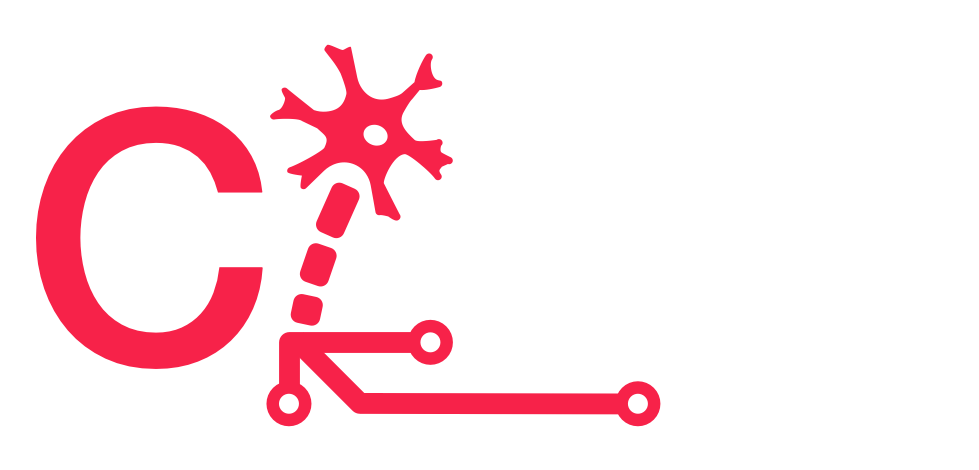 2024
2024